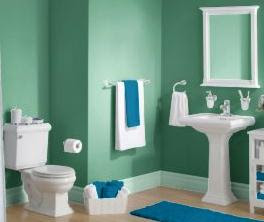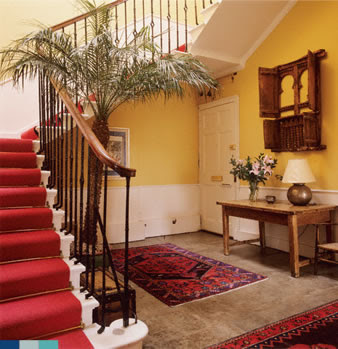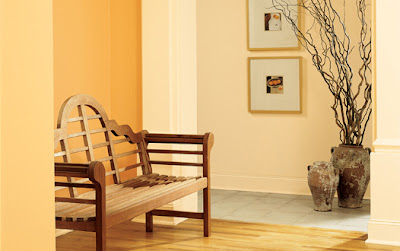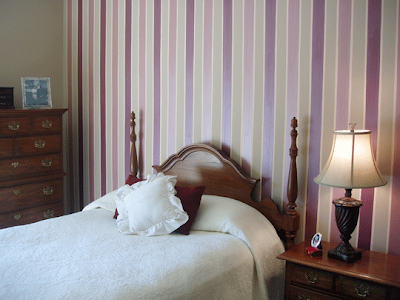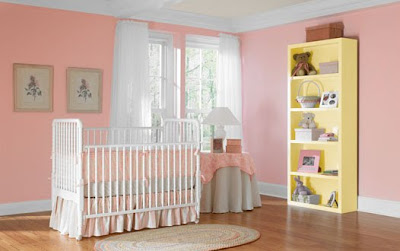
Luxury Homes and House Design Blog, Interior Design, Luxury Home Plans, New Homes Construction, Residential Architects and Designers, Custom Home Builders, Modular Office, Homes for Sale, Properties and Real Estate.Best House Design, Best Home Design, Luxury Homes, Green house design , Sustainable house design, Luxury homes, Interior design, Home decorator, Prefab Home, Small house, Cabin Design, Minimalis House, Modern House ,Modular House , Natural House, Green home design
Monday, November 30, 2009
I've been dragging...

Friday, November 27, 2009
Thursday, November 26, 2009
Choosing an interior design
Finding a good interior design college is simplified with access to the Internet. Choosing an interior design college that focuses on your intellectual and artistic education while providing a technical foundation for your future development is key to a good education. Look for a school that specializes in all aspects of interior design and allows you to mold your education to meet your expectations.
Designer Florence Knoll changed the way American
Florence Knoll often presented plans using actual textiles and materials. "It was an effective way to visualize the results," she noted. Her rough sketch for the design of her husband's 12 x 12 ft. office at 575 Madison Avenue has all the hallmarks of the "Knoll look" - spare clean lines, touches of bright color, innovative space planning - an uncluttered elegance. As a salesroom, it persuaded many reluctant clients. After Hans Knoll died in an automobile accident in 1955, Florence Knoll became president of company and later president of Knoll International. In 1958, she married Florida banker Harry Hood Bassett. Two of her most widely published projects were the Connecticut General Life Insurance Building in Bloomfield, Connecticut, and Eero Saarinen's general headquarters building for CBS in New York.
Wednesday, November 25, 2009
The Complete Course in Interior Design
Sheffield's signature Interior Design Course is the best way to start your new career!
Tuesday, November 24, 2009
Dallas Holiday
 Hello! I'm working away, trying to get everything done in a short week; just like most of you are. Although, not totally certain; I think we may be traveling to Dallas for the weekend. I really hope we do because I LOVE Dallas shopping:) In order to find the best sites, I like to check out Style Swoon for great hints. Check it out. Its a great blog! Anyway, I saw an article about a shop called North Star Antiques. This place is going at the top of my list to see.
Hello! I'm working away, trying to get everything done in a short week; just like most of you are. Although, not totally certain; I think we may be traveling to Dallas for the weekend. I really hope we do because I LOVE Dallas shopping:) In order to find the best sites, I like to check out Style Swoon for great hints. Check it out. Its a great blog! Anyway, I saw an article about a shop called North Star Antiques. This place is going at the top of my list to see. 

 (Photos via North Star Antiques website)
(Photos via North Star Antiques website)I'm just hoping they are open Thanksgiving weekend. Please, please be open!!!!!
Saturday, November 21, 2009
Top Of The World!
Thursday, November 19, 2009
Cougartown.

Wednesday, November 18, 2009
Half Dose #71: Grand Teton National Park Discovery and Visitor Center
[photo by Nic Lehoux]
When I think of a national park visitor center the one overlooking Mount Rushmore, as portrayed in Alfred Hitchcock's North By Northwest, comes to mind, mainly because I've never been to a national park appointed with such a building. I'm not sure if the cafeteria in the visitor center in the film is modeled on the real thing, but a few things come across in the film set: a spacious interior, a modern/rustic aesthetic, and expansive views of Mount Rushmore. The Grand Teton Visitor Center has all these qualities, though its view is much less focused than the North Dakota landmark.
[photo by Nic Lehoux]
The main parti of the design is a U-shape that creates an intimate outdoor space and opens up a large perimeter of windows to the mountain views to the north. Services and other ancillary spaces are located on the east and west (an auditorium addition is planned for the west side), leaving the central spaces open with generous light from the south-facing courtyard. [floor plan]
[sketch and plan by Bohlin Cywinski Jackson]
Further, the sloping section means the north-facing glazing is taller than the exterior walls facing the courtyard. This may seem at odds with the particularly cold Wyoming winters, but it serves more of a symbolic than a practical purpose: the slope and expanse of glass open up the building towards the mountains while the serrated plan echoes their rugged topography.
[photo by Nic Lehoux | sketch by Bohlin Cywinski Jackson]
In terms of appearances, the building brings to mind the phrase "extreme vernacular," in the sense of "to the extreme!" The Visitor Center recalls traditional wood buildings -- mostly in the courtyard and solid east-west ends -- but it departs sharply from the vernacular by combining the sloping roofs with a highly irregular plan and large expanses of glass.
[photos by Nic Lehoux]
Even the tree-trunk columns and beams depart from any traditional role in the selective use of them: they are not continuous, only used in an upside-down U-formation when needed at varying angles that echo the exterior wall but do not follow them precisely.
[photo by Nic Lehoux]
This last photograph clearly illustrates the expansive views captured with the 30-foot (9-meter) high glass walls. In this large space the Discovery displays get a little lost; I can see people quickly gravitating to the glass walls and benches past them. Remembering North by Northwest, I can see a lovely cafeteria in this space.
"This Means Something!"
"I figured it out, that's all. Will you just listen?... Have you ever looked at something and it's crazy, and then you looked at it in another way and it's not crazy at all?... Don't be scared. Just don't be scared. I feel really good. Everything's gonna be all right. I haven't felt this good in years."
I watched Close Encounters of the Third Kind again the other day. It's a fabulous film in many ways, imbued with an almost lyrical technological optimism. Despite coming from a golden age of cinematic science-fiction, it's completely different in tone to anything else from the period. While Star Wars, for example, can be read as an allegory for the Cold War and America's struggle against another Evil Empire, Close Encounters is a plea for tolerance and understanding. Even the military appear relatively benign in it.

It can also be seen as having another, more unlikely, sub-text; one about issues of representation and communication. The film's central character is Roy Neary (played by Richard Dreyfus). Following a close encounter with an alien spaceship Roy becomes obsessed with visions of a strange, mountainous formation. He notices this shape everywhere: in the folds of his pillows, in the blob of aftershave in his hand and in a mound of mashed potatoes on his plate.
He starts to create maquettes of it in clay which become ever larger and more elaborate. Eventually, having alienated his entire family to the point where they move out, he creates an enormous model that fills his entire house. To make this model he ransacks the garden for materials, chucking them through a broken window into the living room to the horrified bemusement of his neighbours.
The resulting model is an utterly fabulous object, a grotesque assemblage of mud, vegetation, rubble, furniture and bits of string. It is both mimetically accurate (as we and Roy will later find out) and highly expressionistic, as if created by a bizarre hybrid of Robert Smithson, Jessica Stockholder and an acid-crazed model railway enthusiast.
Just as Roy is nearing the completion of this extraordinary object he realises what it means. The TV that he has blaring in the corner of the otherwise devastated living room has a news report about a bizarre shaped rocky outcrop in Wyoming. Roy looks at the footage of Devil's Tower and then back at his creation. He sits down in shock.
In some senses Roy is like a typically Hollywood-ian depiction of the artist: a half-crazed, anti-social lunatic in search of some intangible truth. Except he isn't an artist. Nor is he mad, just a little intense. And the film also wants us to take him seriously. His sculpture, as he repeatedly explains whist making it, really does mean something.
The film is obsessed with issues of representation and non-verbal communication. The famous five-note score that the scientists use to communicate with the aliens, for example, effectively replaces speech. The chief scientist is a Frenchman (played by film director François Truffaut) who makes no more than one or two gnomic utterances and is accompanied throughout the film by an ineffectual translator. The fact that none of the Americans can understand him seems to imbue him with some special understanding of what is going on.
Roy can't communicate his obsession through conventional language and is forced into non-verbal communication. He has to make what he is thinking in order to express it. And he's not alone in his obsession. Another character - Gillian Guiler - is also obsessed with Devil's Tower. She draws it over and over again. In a brilliant scene the two of them converge on Devil's Tower aware that it's the location for the alien spaceship's landing. Trying to work out how to scale the mountain Roy reveals that his knowledge of its topography is vastly superior to Gillian's. "You should try sculpture next time", he deadpans.
In making a plea for tolerance the film also seems to implicitly reject language, as if our primary means of communication were somehow ultimately a handicap to understanding. Language seems to dissolve during the film, becoming ever more useless until it dissipates into the abstract lights and sounds used by the scientists to communicate to the aliens. It is, in many ways, an anti-logocentric film, a celebration of the non-verbal and the techno-haptic.
Refuge
Photographer Bas Princen has a new book out, Five Cities Portfolio: Amman, Beirut, Cairo, Dubai, Istanbul, coinciding with a conference to be held this Friday, November 20, at the Netherlands Architecture Institute.
That event, called "Refuge: Architectural Propositions for Unbound Spaces," will feature—among many other things—a presentation by Philipp Misselwitz and Can Altay, whose research accompanies (and seems to have at least partially inspired) Princen's photos.
About the conference:
- "Refuge" explores the causes and spatial impact of migration through voluntary or involuntary "refugees" who are transforming cities around the globe. Individuals or groups are elegantly or forcefully encapsulated from within the context of the city and society. Refuge produces an ever more atomized urban tissue where the "camp" has become both spatial paradigm and everyday reality, be it in the form of a gated community, slum, or humanitarian refugee camp.
More of Princen's work can be found at Icon magazine, meanwhile, and an interesting interview with Princen was published in Oase #76 last year.
Salt Space / Biospeleology
"The cavern was formed over three decades," the AP writes, "as oil field service companies pumped fresh water into a salt layer more than 400 feet below the surface and extracted several million barrels of brine to help with drilling... Over the past few decades, communities in Texas, Kansas, Michigan, Canada and Europe learned of similar underground danger only after cracks appeared and the ground began to sink." Unsurprisingly, then, "this man-made salt cavern has residents nervous."
It's interesting to point out, however, that Carlsbad, NM, is, of course, home to Carlsbad Caverns—making this delirious salt cave a kind of upstart simulacrum, a replicant geology intent on asserting its prominence over the natural formations nearby. We will be assaulted by copies from below.
But I mention this here because of the idea that Carlsbad could easily become the setting of some future variant of Sigizmund Krzhizhanovsky's story "Quadraturin," mentioned previously, in which the fabled room-expanding substance is accidentally deployed underground, deep-injected in an act of misguided chemical sequestration, only to form vast and endlessly self-expanding caverns miles below the earth's surface.
Unpredictably fractal and resistant to all known forms of cartography—perhaps it could even be a Mandelbulb—these weirdly life-like systems of space coil and surge through bedrock, threatening to destroy all those who live above. Living space, crawling through geology.
(Thanks to Steve Silberman for the tip!)
Room Painting Ideas - 32 Pics
While most of us may not spend a lot of time thinking about color, it affects every day of our lives. Color can influence our mood and our thoughts. Colors affect people in many ways, depending upon one’s age, gender, ethnic background or local climate. Certain colors or groups of colors tend to get a similar reaction from most people - the overall difference being in the shade or tones used. So it’s important to choose wisely.



